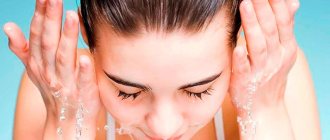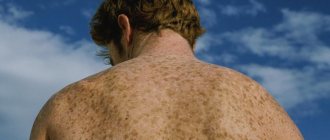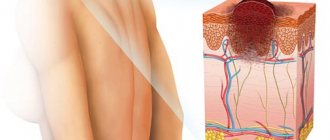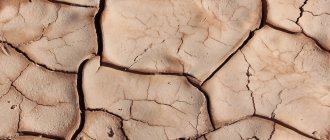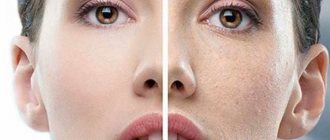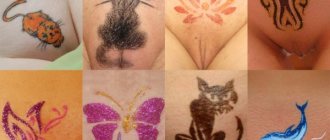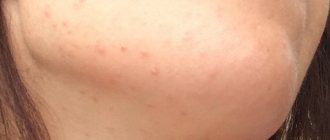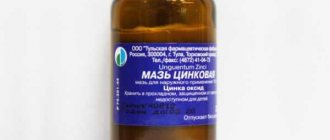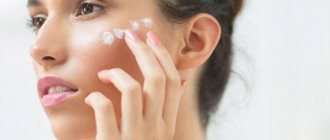Pimples, or acne vulgaris (acne), develop against the background of seborrhea, that is, excessive secretion of sebum with altered properties. They occur in areas of the skin that are richest in sebaceous glands. On average, there are 900 glands per 1 cm2 of skin on the face, upper back and chest, while in other areas their number does not exceed 100.
…
The reasons that cause the formation of acne include not only excessive secretion of the sebaceous glands, but also hormonal imbalance, infection of the skin by bacteria, and pathology of the hair follicle (for example, ingrown hairs). This condition is most often observed in adolescents, but adults also often face this problem. Acne is one of the most common skin diseases.
The peak incidence occurs between the ages of 13 and 18 years, and acne appears earlier in girls, but disappears faster. In young people, acne can take severe forms, causing significant cosmetic defects and worsening the quality of life, primarily due to psychological problems. In men, the pathology becomes chronic and by the age of 30-40 turns into late acne.
The first signs are increased sebum secretion (seborrhea) and microcomedones. You should consult a doctor already during this period to prevent the development of severe forms of the disease.
So, what is subclinical acne?
Many tubercles become inflamed and filled with pus. These are the inflamed pimples or acne that we are all very familiar with. Subclinical acne (subclinical microcomedones or bumps on the skin) is a little different.
When you have subclinical microcomedones, bumps appear on your face, but they never develop a “head,” like an inflamed pimple that looks like a pustule—the technical name for a pimple. It may be red, but not necessarily irritated or inflamed. Instead, it just makes your skin look uneven. This is caused by clogged pores. Subclinical microcomedones are caused by hormones, genetics and clogged pores, and are the precursors to acne.
You already know that clogged pores are caused by excess sebum (oil) on the skin. Dead skin cells and impurities can also clog your pores, leading to the typical pimple and subclinical blackheads. And if your pores are clogged, you will notice these bumps appearing on your forehead, cheeks, chin and nose.
Treatment
Treatment tactics for white pimples are selected based on the individual characteristics of the patient. Unlike tumors, such neoplasms do not pose a danger to the patient. Often, white pimples disappear without third-party intervention during the skin renewal process.
Self-medication is dangerous with complications!
Attention
Despite the fact that our articles are based on trusted sources and have been tested by practicing doctors, the same symptoms can be signs of different diseases, and the disease may not proceed according to the textbook.
Pros of seeing a doctor:
- Only a specialist will prescribe suitable medications.
- Recovery will be easier and faster.
- The doctor will monitor the course of the disease and help avoid complications.
find a doctor
Do not try to treat yourself - consult a specialist.
Removal of comedones and milia is carried out in beauty salons or by a dermatologist. For this purpose, various types of professional facial cleansing are used, carried out using a vacuum (used when tumors form deep under the skin), hardware or ultrasound method.
Why can our articles be trusted?
We make health information clear, accessible and relevant.
- All articles are checked by practicing doctors.
- We take scientific literature and the latest research as a basis.
- We publish detailed articles that answer all questions.
Chemical peeling is also prescribed to remove whiteheads. The choice of method is made taking into account the characteristics of the skin of a particular patient.
Manual cleaning was often used to treat the problem in the past. It involves preliminary steaming the face and then squeezing out the contents of whiteheads. For this purpose, specialized instruments are used, and the affected area is treated with an antiseptic composition at the end of the procedure.
Manual cleaning is practically not used today. With this treatment, there is a high risk of infection, which will cause the appearance of ulcers and other, more severe complications. In addition, manual cleaning often leaves scars.
The following ointments are also used in the treatment of white pimples:
- antiseptic;
- keratolic;
- antibacterial.
How to get rid of acne marks
Facial rashes are a common problem that almost every person faces.
To quickly remove acne, it is recommended to regularly apply preparations with a drying effect to the problem area.
If white pimples appear against the background of a disease of the internal organs, treatment of the latter is prescribed:
- endocrine pathologies are treated with hormonal drugs;
- micronutrient deficiency is eliminated by using appropriate vitamin complexes;
- sedatives are used to restore the nervous
- for lesions caused by long-term use of medications , the use of enterosorbents is indicated.
To treat the problem effectively, it is recommended:
- apply antibacterial ;
- wash daily with clean water;
- Exfoliate twice a week with a soft scrub;
- Treat the affected skin daily with products that include salicylic acid and alpha hydroxy acids.
How to relieve acne inflammation
Acne is a widespread problem.
Due to the fact that whiteheads often form on dry skin, to remove them, as well as to prevent their development, you need to drink at least 1.5 liters of water every day.
This will maintain the moisture content of the epidermis at the desired level. In addition, this amount of liquid is enough to remove toxins from the body.
Incorporate a cleanser into your daily routine
The best way to cleanse your skin and remove bacteria and dead skin is to be smart about the products you use.
Make sure you use a cleanser that removes makeup without leaving your skin dry and irritated. If you already have dry or sensitive skin, try a creamy cleanser that will soothe your skin, like Nettoyant Creme Cleanser . If you have combination or oily skin, you'll be better off using Gel Nettoyant Cleansing Gel . It removes makeup while softening and cleansing the skin.
Additional Research
The results of additional research will help you understand why yellow pimples have formed on your face or body. Based on your specific situation, the following procedures may be necessary:
Sometimes, to clarify the underlying pathology, it is necessary to consult an immunologist, endocrinologist or gastroenterologist.
Include lotion in your daily care routine
Do you use a toning lotion after cleansing? If not, and you suffer from subclinical acne, you should use it. This is because using a cleanser is only part of the cleansing process. While your cleanser removes dirt and bacteria from your skin, lotion will also help in the cleansing process. PNG Lotion Yon-Ka PNG and PS Lotion Yon-Ka PS have a strong antiseptic and cleansing effect because they contain essential oils of lavender, geranium, rosemary, cypress and thyme, collectively known as Quintessence Yon-Ka.
No matter what skin type you have, the right toning lotion is an essential part of any skin care routine. PNG Lotion Yon-Ka PNG is intended for normal to oily skin. It's also a Martha Stewart favorite. And if you have dry, dehydrated or sensitive skin, PS Lotion Yon-Ka PS is the perfect toning lotion for you.
Reasons for appearance
The main reason for the appearance of pimples on the face
- This is the excessive formation of keratin by cells. Presumably, many new cells appear in the skin, secreting keratin, and the exfoliation of old ones occurs less and less. The excess keratin forms into a clot, which then becomes a cyst.
There could be many reasons for this. So, milia can be caused by:
- hormonal imbalance;
- metabolic disorders;
- hyperkeratosis;
- pathologies of the thyroid gland;
- negative long-term exposure to sunlight;
- diseases of the digestive organs;
- poor nutrition, regular consumption of fatty and fried foods in large quantities, almost complete absence of fiber in the diet, lack of important vitamins, etc.;
- diseases of the pancreas and adrenal glands, leading to hormonal imbalances.
By the way, hormonal imbalance is a common cause of the appearance of millet not only in adults, but also in children, in particular, in newborns. During childbirth, the child's body experiences a hormonal crisis, as a result of which milia appear. But if in adults they do not go away without removal, then in babies they disappear about a month after birth.
Types of acne
To treat a skin disease, you need to know a specific description of individual types of acne. In nature, there are a huge number of varieties and classifications of acne, let’s look at most of them.
- Comedones.
- Papular.
- Pustular.
- Nodal.
- Abscessing.
- Phlegmonous.
- Conglobate.
We will consider a description of these types of acne below, as well as methods for treating acne.
Nodal
Subcutaneous acne, which is distinguished by its pain and dense base. They appear due to complete blockage of the gland duct, which inflames and discharges the nearest areas of the skin.
If these blisters form, you should immediately consult a doctor. This type is usually cured with the drug Isotretinoin.
Conglobate
This is one of the most complex types of acne, which can multiply throughout the body. Pimples are multiple reddened follicles that grow together between nearby sites of infection.
Typically, inflammation grows on the body of an adult male, due to increased testosterone levels and steroid use. If you have this disease, you should immediately consult a doctor to avoid worse consequences.
In addition to the main types of acne, acne also occurs in young children. Types of such neoplasms are called Infant or Children's acne. When inflammatory processes appear on the body, it is necessary to undergo a full course of tests to identify the causes of the disease.
Acne always requires treatment from a doctor or at home. To understand what types of acne you can treat on your own, you need to know the degree of their development. There are only 4 stages of neoplasms, of which only stage 1-2 can be treated at home. Next, you need professional help from a specialist.
Acne cream: TOP 3 best products and comparison of their effectiveness. Tips from dermatologists on how to get rid of acne (125 photos)Pimples broke out: finding the cause, choosing a remover, tips and the best skin care products (70 photos)
Anti-acne masks - composition, application, contraindications, advice from cosmetologists on application and mask recipes for home treatments (130 photos and videos)
Abscessing
The result of worsening nodular acne is abscess acne. Due to the development and reproduction of pathogenic microorganisms, cysts are formed that are filled with purulent fluid and vaguely resemble a boil.
This type refers to painful and rather soft neoplasms. In advanced forms, the only medicine is a scalpel, which leaves behind small but deep scars.

